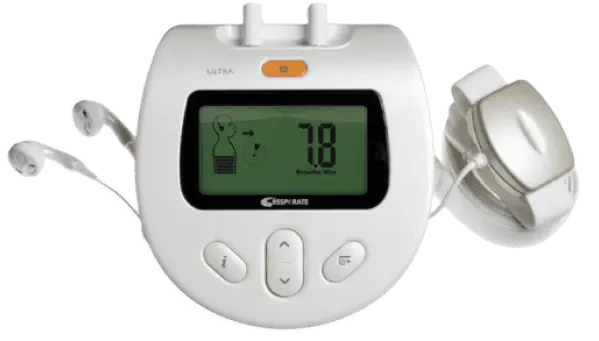According to the American Heart Association, 1 in 3 adults has high blood pressure. More importantly, 1 in 6 don’t even know it — and that’s a BIG problem! In this article, we will talk about six key ways to maintain healthy blood pressure.
Here are 6 natural ways to keep your blood pressure within a normal range.
- Exercise Regularly: Exercise alters the structure of arteries, decreases arterial stiffness, and regulates the autonomic nervous system.
- Watch What You Eat: One of the most recognized diets for reducing or maintaining a healthy blood pressure is the DASH diet.
- Maintain a healthy weight: Healthy weight is defined as a body mass index (BMI) under 25.
- Balanced sodium/potassium: The sodium/potassium balance in your body plays a key role in the health and dilation of blood vessels and arteries.
- Breathe deeply: Slow deep breathing has long been used in yoga, meditation, and relaxation practices to promote health, including healthy blood pressure.
- Get enough sleep: Sleep is such a vital aspect to our overall well being both mentally, and physically.
The importance of healthy blood pressure
Both systolic (top number) and diastolic lower number) blood pressure measurements are important. But in general, systolic has a greater focus because it’s the biggest risk factor for heart disease in people over 50 years of age. Statistics show that every 20 mmHg increase in systolic or 10 mmHg in diastolic blood pressure, doubles your risk of stroke and ischemic heart disease. Ischemic heart disease, also known as coronary artery disease or coronary heart disease, is a narrowing of the arteries. When this happens, your risk of heart attack dramatically increases.
6 Key Ways to Maintain a Healthy Blood Pressure Naturally (or get back to one)
While you may still require medication, there are natural ways to maintain healthy blood pressure or get back to a healthier range.
1. Exercise regularly:
Exercise alters the structure of arteries, decreases arterial stiffness, and regulates one of the most important blood pressure control centers in your body — the autonomic nervous system.
Aerobic exercise has been shown to reduce blood pressure by an average 5-7 mmHg. Strength training reduces it an average 2-3 mmHg.
Even small reductions like these equate to big benefits for you:
- 14% decreased the risk of stroke
- 9% decreased the risk of coronary heart disease
- 7% decreased the risk of death
And it doesn’t matter if you’re 80 or even 90 years of age, regular exercise is beneficial.
How much exercise do you need to do?
Around 30 minutes per day is recommended but as little as 15 minutes a day of low-intensity activity, like walking, provides many benefits. If you struggle to fit in 30 minutes at one time, break it into three 10-minute sessions, as this is equally effective.
2. Eat a healthy diet
One of the most recognized diets for reducing or maintaining a healthy blood pressure is the DASH diet. DASH stands for “Dietary Approaches to Stop Hypertension.” Studies show a DASH diet can reduce blood pressure by an average of 10 mm-Hg systolic and 5 mm-Hg diastolic.
The DASH diet consists of whole foods low in saturated fat and overall fat, low in sodium and low in sugar. It is based on high fiber foods with a particular focus on consuming a wide variety of colorful fruits and vegetables, along with whole grains. It also includes fish, poultry, nuts, seeds, and low-fat dairy products.
3. Maintain a healthy weight:
When you gain weight, a whole range of metabolic changes occurs in your body that influences blood pressure levels. A healthy weight is defined as a body mass index (BMI) under 25. Overweight is 25 to 29.9. Obese is above 30.
Making changes to your diet and exercise routine will help you maintain a healthy weight or lose a little weight if you need to. According to research, an 11 to 22-pound weight loss achieves an average blood pressure reduction of 6 mmHg.
4. Balanced sodium/potassium:
To control blood pressure, you may have heard that it’s important to reduce your sodium intake, and this is absolutely true. People generally consume sodium through “added” salt in the diet, which is mainly found in processed and packaged foods.
The sodium/potassium balance in your body plays a key role in the health and dilation of blood vessels and arteries. When there’s an imbalance, blood pressure levels can rise. And the imbalance is usually too much sodium and not enough potassium.
Studies have shown that an increase of 250 mg per day in potassium may lower blood pressure by 2-3 mmHg. However, more is better as the recommended potassium intake is 4700 mg per day.
Examples of foods high in potassium include:
- Beet greens (½ cup cooked) – 654 mg potassium
- Lima beans (¼ cup) – 767 mg
- Banana (1 medium) – 422 mg
- Swiss Miss cocoa mix (1 envelope, no added sugar) – 405 mg
- Baked potato (1 medium with skin) – 332 mg
- Pistachio nuts (1 ounce, 49 kernels) – 291 mg
- Raw pumpkin seeds (1 ounce, 85 seeds) – 261 mg
- Kidney beans (¼ cup) – 186 mg
- Tomato paste (1 tablespoon) – 162 mg
- Sundried tomatoes (4 pieces) – 138 mg
- Cocoa (unsweetened, 1 tablespoon) – 135 mg
- Spinach (½ cup cooked) – 83 mg
5. Breathe deeper:
Slow deep breathing has long been used in yoga, meditation, and relaxation practices to promote health, including healthy blood pressure. But there is a much easier, more effective way to practice deep breathing — try our RESPeRATE device.
Deep breathing practice can be hard to do on your own. So the RESPeRATE device acts as your personal coach. And it’s super easy to use! You strap a breathing sensor around your upper abdomen, connect the sensor to the device, sit back in a chair and relax with some headphones on. Then let the RESPeRATE device do its work.
The RESPeRATE device will create a personalized melody for you to listen to. As you listen, an amazing thing happens — your body naturally follows the rhythms, guiding you toward synchronized, deeper, slower breathing. All you have to do is use the device for 15 minutes, at least 4 times per week to achieve results. But if you can use it daily, that’s even better.
As for RESPeRATE’s effects on blood pressure…
The results of 16 studies combined show a weighted average blood pressure reduction of 10 mm-Hg systolic and 5 mm-Hg diastolic. And the collective evidence supports an even greater reduction for older adults over 65 years (16/7 mm-Hg), and in those who have initial systolic blood pressure above 160 mmHg (17/7 mm-Hg).
6. Get The Sleep You Need:
You can take steps to improve your sleep habits. First, make sure that you allow yourself enough time to sleep. With enough sleep each night, you may find that you’re happier and more productive during the day.
- Go to bed and wake up at the same time every day. For children, have a set bedtime and a bedtime routine. Don’t use the child’s bedroom for timeouts or punishment.
- Try to keep the same sleep schedule on weeknights and weekends. Limit the difference to no more than about an hour. Staying up late and sleeping in late on weekends can disrupt your body clock sleep-wake cycle.
- Use the hour before bed for quiet time. Avoid strenuous exercise and bright artificial light, such as from a TV or computer screen. The light may signal the brain that it’s time to be awake.
- Avoid heavy and/or large meals within a couple of hours of bedtime. (Having a light snack is okay.) Also, avoid alcoholic drinks before bed.
- Avoid nicotine (for example, cigarettes) and caffeine (including caffeinated soda, coffee, tea, and chocolate). Nicotine and caffeine are stimulants, and both substances can interfere with sleep. The effects of caffeine can last as long as 8 hours. So, a cup of coffee in the late afternoon can make it hard for you to fall asleep at night.
- Spend time outside every day (when possible) and be physically active.
- Keep your bedroom quiet, cool, and dark (a dim night light is fine if needed).
- Take a hot bath or use relaxation techniques before bed.
Try any one of these ways or all of them, to finally get your blood pressure under control.
 Eli Ben-Yehuda
Eli Ben-Yehuda 






Comments
2 Replies to “Six Ways You Can Maintain A Healthy Blood Pressure Naturally!”
Thanks for the information I got to know that we can cure blood pressure by many ways but we shoult prevent it first.
I am looking for a way to lower my blood pressue naturally